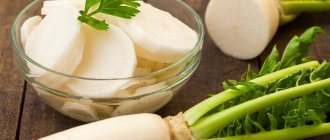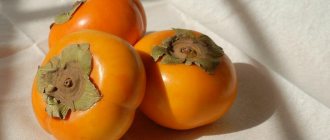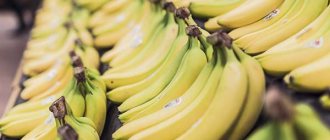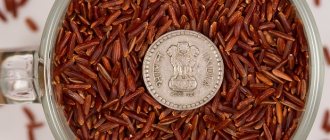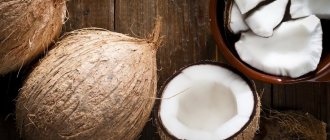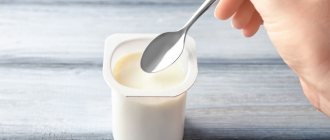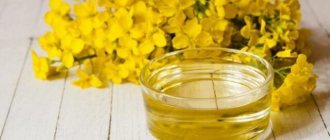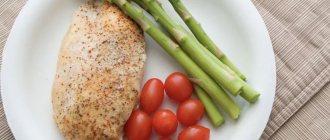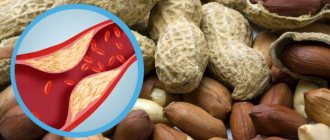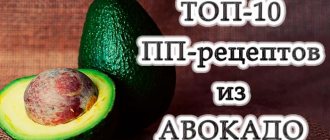© bit245 — depositphotos.com
Share:
This light-loving plant from tropical and subtropical regions belongs to the category of evergreens. The fruits of the pistachio tree have been successfully used as food for more than 2000 years. They have found their application in cosmetology and medicine. In the article we will look at the beneficial properties of pistachios, their nutritional value and other features.
Nutritional value and composition of pistachios
Nuts are eaten as part of desserts, as an independent dish, or added to salads, appetizers, and hot dishes, mainly in crushed form.
Nutritional value (BJU) of pistachios:
| Substance | Compound | Units | |
| In a shell | Without shell | ||
| Squirrels | 10 – 11 | 21 | G |
| Fats | 24 – 25 | 52 – 54 | G |
| Carbohydrates (total) | 6 – 8 | 12 – 13 | G |
| Energy value | 270 – 280 | 560 – 620* | Kcal |
*The calorie content of pistachios depends on the variety, storage and preparation method. Raw nuts have minimal energy value. Fried fruits contain more fat, so their calorie content is maximum.
Pistachios contain vitamins and minerals. In terms of calcium content, they are the leaders among nuts. They can also compete with other species in terms of potassium content. But the vitamin composition of the fruit is inferior to walnuts and almonds.
Pistachios contain a small amount of “fast” carbohydrates. Therefore, the glycemic index (GI) of nuts is small, only 15 units. This level allows the fruits to be used by people with impaired glucose tolerance and diabetes. When counting calories, you need to take into account the GI. If you reduce the energy value by replacing pistachios with chestnuts, the calorie content will decrease and the GI will increase. Compare the GI level and energy value of nuts and seeds in the photo below:
A little history
Central Asia is considered to be the birthplace of pistachio trees. Individual representatives of the genus appeared on Earth in the Tertiary period. And the earliest example of modern pistachios was grown in Uzbekistan.
Archaeologists have established that seeds were a common food in 6759 BC. e. in the territory from Syria to Afghanistan. In Persia they were especially valued, revered as a symbol of wealth and used instead of money. And the Chinese considered it a “lucky nut” or “tree of life” and attributed magical properties to the beneficial fruits.
The Romans brought pistachios to the European continent. The fruits are mentioned in the works of Dioscorides and Pliny the Elder. By the end of the 19th century, plants were already grown in different parts of the English-speaking world - Australia, California, New Mexico.
Today pistachios are cultivated in Syria, Spain, Iran, Turkey and other countries. Dried fruits are stored for no more than a year. Before selling, they are sometimes soaked in a saline solution and fried.
Useful properties of pistachios
If you regularly eat pistachios, their benefits will lie in the effects of the biologically active substances contained in the nuts. Despite their more modest composition compared to walnuts and hazelnuts, they have a beneficial effect on the body of both an athlete and an ordinary person.
Useful properties of pistachios:
- Tocopherol (E). It has antioxidant properties and rejuvenates not only the skin, but also the body at the cellular level. Its beneficial effects can be seen in improving the structure of nails and hair, and lowering blood pressure.
- Folic acid (B9). Normalizes the functioning of the digestive tract, prevents developmental disorders (especially during early pregnancy), increases the capabilities of the immune and hematopoietic systems.
- Pyridoxine (B6). It is especially useful for athletes with high intellectual stress (chess, orienteering). Leads to normalization of metabolic processes in brain tissue. Affects the functioning of the heart and blood vessels.
- Pantothenic acid (B5). Affects the athlete's weight. This vitamin is especially useful in weight-dependent sports (boxing, gymnastics, figure skating, horse riding).
- Riboflavin (B2) . Improves the structure of the skin and connective tissue. Particularly useful during the recovery period after injuries.
- Thiamine (B1). Regulates cellular processes. Increases the resistance of cell membranes to damage. Normalizes the conduction of nerve impulses.
- Nicotinic acid (PP). Improves the structure of the skin, normalizes digestion. Stabilizes the athlete’s emotional background and improves sleep quality.
The mineral composition also determines the beneficial properties of nuts. Calcium-rich fruits increase muscle strength and improve bone structure. This strengthens the skeleton and increases muscle endurance, including the myocardium. And potassium in fruits normalizes heart rate.
Peanut
With 622 cal per 100 g of weight, peanuts are famous for their rich vitamin and mineral composition. It includes:
- serotonin – the “happiness hormone” that improves mood;
- antioxidants – prevent aging, remove harmful substances from the body;
- magnesium – improves heart function;
- vitamins B, C, PP – immunize the body;
- thiamine – prevents hair loss;
- Folic acid helps strengthen the nervous system, gives healthy appearance to skin, nails, and hair.
It is recommended to peel the peanuts before use. You can dry it a little in the oven, but then the calorie content increases. For those who are keen on going to the gym, peanuts will help build muscle faster thanks to the methionine they contain. Normalizes biliary processes, but in case of kidney problems and pancreatitis, its use is undesirable.
Features of eating pistachios
Most often, pistachios are used as an independent dish. Nuts have proven themselves to be a healthy snack in the morning. The high caloric content of fruits does not allow them to be actively consumed in the evening. Their daily requirement for an adult is 10-15 nuts.
Raw or naturally dried nuts without additional components (salt, chocolate, etc.) are suitable for a healthy diet. Fruits without added sugar can be considered a successful combination with pistachios. Steamed apples, pears, plums, berries go well with nuts even in dried form (marshmallow).
For children
The effectiveness of nuts for men and women differs from the benefits they bring to children. Eating pistachios by young athletes is beneficial for proper development. A daily norm of 5-7 nuts is enough to obtain about a quarter of the daily norm of vitamins and minerals included in the fruit.
To reduce allergic reactions, it is recommended to introduce pistachios into children's diets from 3 years of age. The fruits are rich in vitamins and are especially useful during intensive growth and tissue development, that is, in childhood and adolescence.
For men
Pistachios are a calorie bomb, loaded with vitamins and microelements. Their effect on the male body is distinguished by effects associated with a positive effect on the reproductive system.
They appear:
- increased potency;
- increased libido;
- improving sperm quality.
© serezniy — depositphotos.com
For women
The substances contained in the fruits are especially relevant for women. They immediately affect several areas of healing the body:
- Significantly improves skin structure. Pistachio oil is one of the most effective in cosmetology. It is added to creams, masks, lotions, compresses, etc. The result of regular use of oil is a significant rejuvenating effect, strengthening hair and nails.
- During pregnancy, pistachios gently cleanse the intestines, saturate the blood with substances necessary for the baby, promoting its proper development.
- The high content of biologically active substances and minerals softens the menopause period.
When breastfeeding
After childbirth, nuts stimulate milk production by the mother's body. They don't just increase fluid volume. Nuts improve the properties of milk: increasing fat content, saturation with biologically active substances and minerals.
It is especially important for a child to get a high amount of calcium into his body. In this case, the mother’s body is not depleted of this metal.
What minerals do we need in life?
For normal functioning we need 20 minerals. They enter the body with food, so with a balanced diet we do not face a deficiency. The degree of absorption of minerals depends on the state of the respiratory and digestive organs; the level of macro- and microelements depends on the season: it decreases in spring, and increases in early autumn.
The lack of minerals, typical of spring due to a diet poor in nutrients, affects well-being:
- weakness and little strength appears;
- unexplained drowsiness;
- the skin becomes dry and nails become brittle;
- hair may fall out significantly.
You should not prescribe dietary supplements and vitamin-mineral complexes on your own, without a doctor’s recommendations and a biochemical blood test. But everyone can review their diet so that they get the maximum amount of minerals. You just need to add fruits, vegetables, herbs, complete protein, as well as nuts, seeds, sprouts, rich in macro- and microelements.
Harm of pistachios and possible contraindications
Pistachios are rich in vitamins and minerals. But even when using them, there are adverse reactions. Possible harm from eating pistachios:
- individual intolerance;
- weight gain due to overeating;
- indigestion (due to overeating).
The greatest harm can be caused not by the pistachio nuts themselves, but by their improper use. For example, they are eaten in shortbread or cakes. In this case, the calorie content of pistachios increases many times over. On the Internet you can find various recipes for dishes with pistachios, in which they are mixed with an oil base. It is best not to include them in your diet when eating healthy. Preference should be given to raw nuts mixed with fruit.
To increase the shelf life of nuts, they are soaked in a salty solution and then dried. The result is fruits with a high NaCl content. Eating them leads to water retention in the body, edema, increased kidney function and weight gain. With uncontrolled use of such nuts, metabolic disorders occur. If only salted fruits are available for food, then they need to be soaked before eating. After this, rinse with water and dry.
Contraindications to the use of pistachios:
- individual intolerance;
- obesity (in this case they need to be combined with low-calorie foods and reduce daily consumption);
- kidney disease (for salted nuts);
- increased blood pressure (for salted pistachios).
© molka — depositphotos.com
How to eat almonds correctly
It is recommended to eat almonds raw, as when fried they lose some of their nutritional elements. In this case, the product must be thoroughly washed or soaked in cold water, as it may contain harmful bacteria. Much depends on the choice of fruits.
Before purchasing, pay attention to the following product characteristics:
- packaging integrity;
- quality of the shell (it should not be moldy or cracked);
- smell (if it is bitter, then the taste of the fruit will most likely be the same);
- shelf life.
When toasting almonds, be careful not to overdo it.
Almond oil can be used not only for cosmetic purposes, but also for food. Regular consumption of half a teaspoon on an empty stomach is an effective prevention of many diseases of the gastrointestinal tract. It is also perfect for making sauces, desserts, and dressing vegetable salads. Of course, bitter almond oil is not used for oral administration.
A varied composition and a pleasant, rich taste are the undeniable advantages of almonds. If you decide to supplement your diet with this healthy and nutritious product, do not forget about the rule “everything is good in moderation.” Eat almonds in moderation, and excellent results will not take long to arrive.
Features of choosing and storing nuts
Pistachios can harm an athlete’s body if the nuts are chosen incorrectly.
Preference should be given to:
- nuts with opened shells - they are fully ripe and have the properties listed earlier;
- pistachios with a green kernel - the richer the color of the nuts, the more pleasant the taste;
- no signs of mold, moisture or other storage problems;
- without salt: this sign can not only be seen in transparent packaging - it must be checked by the composition of the product on the label.
Pistachios are very sensitive to temperature, humidity, and sunlight. They need to be protected from sunlight. Glass containers with a tight lid are ideal for storing nuts. Temperature conditions most significantly change the shelf life of nuts:
- at room temperature, nuts retain a pleasant taste for about 3-4* weeks;
- in the refrigerator this period increases to 3-6* months;
- When pistachios are kept in the freezer, they retain their properties for up to 6-12* months.
*The wide variation in shelf life is caused by the different initial state of the nuts.
Note! Salted pistachios store best at room temperature, but spoil faster in the refrigerator or freezer. Pistachios in the shell go rancid more slowly. Their core remains intact. Access of oxygen to its fatty acids is limited.
Recipes for healthy eating
Chicken breasts stewed with vegetables
- 8.6 g Protein
- 2.4 g Fat
- 13.6 g Carbohydrates
- 112.3 kcal
30-35 min.
- #bell pepper
- #second course
- #dietary
- #chicken breast
- #low calorie
- #dinner
- #roasting
- #olive oil
- #soy sauce
- #green beans
- #dinner
Other recipes
Application in medicine
Pistachios are recommended for regular consumption for diseases of the digestive system:
- bile duct dyskinesias;
- cholecystitis;
- after cholecystectomy (removal of the gallbladder);
- cholelithiasis;
- hepatitis;
- liver cirrhosis;
- inflammation of the stomach and intestines (gastritis, duodenitis, enteritis, colitis).
It is useful to introduce pistachio fruits into the diet of patients with cardiovascular diseases:
- atherosclerosis;
- transient ischemic attacks, micro-strokes;
- coronary heart disease;
- angiopathy (senile, hypertensive, diabetic);
- arterial hypertension;
- thrombophilias;
- varicose veins;
- thrombophlebitis.
In emergency cases of poisoning with heavy metal salts, cardiac glycosides or alkaloids, a handful of pistachios can be taken as an emergency detoxification remedy.
The antioxidant properties of pistachios help with eye diseases:
- senile ophthalmopathies;
- macular degeneration;
- cataracts;
- deterioration of twilight vision.
Nuts are useful for women to consume daily to increase sexual desire, and for men for sexual disorders and erectile dysfunction.
Crushed pistachios can be used to make rectal suppositories for proctitis, rectal fissures or hemorrhoids.
Application in dietetics
Although pistachios are high in calories, they are often indicated for inclusion in the diet for people who want to lose weight, as a snack between meals. This is explained by:
- These healthy nuts can replace unhealthy chips, sweets and buns;
- they suppress appetite, thereby suppressing the feeling of hunger;
- taken shortly before meals, they help reduce portion size;
- pistachios improve fat metabolism.
The American nutritionist J. Painter discovered the so-called “pistachio principle”. This principle lies in the fact that if you leave the shells of the pistachios he ate in front of a person who is losing weight for the whole day, then subconsciously his brain thinks that the body is already full. The doctor has proven that thanks to this principle, the number of calories consumed per day is reduced by 18%.
